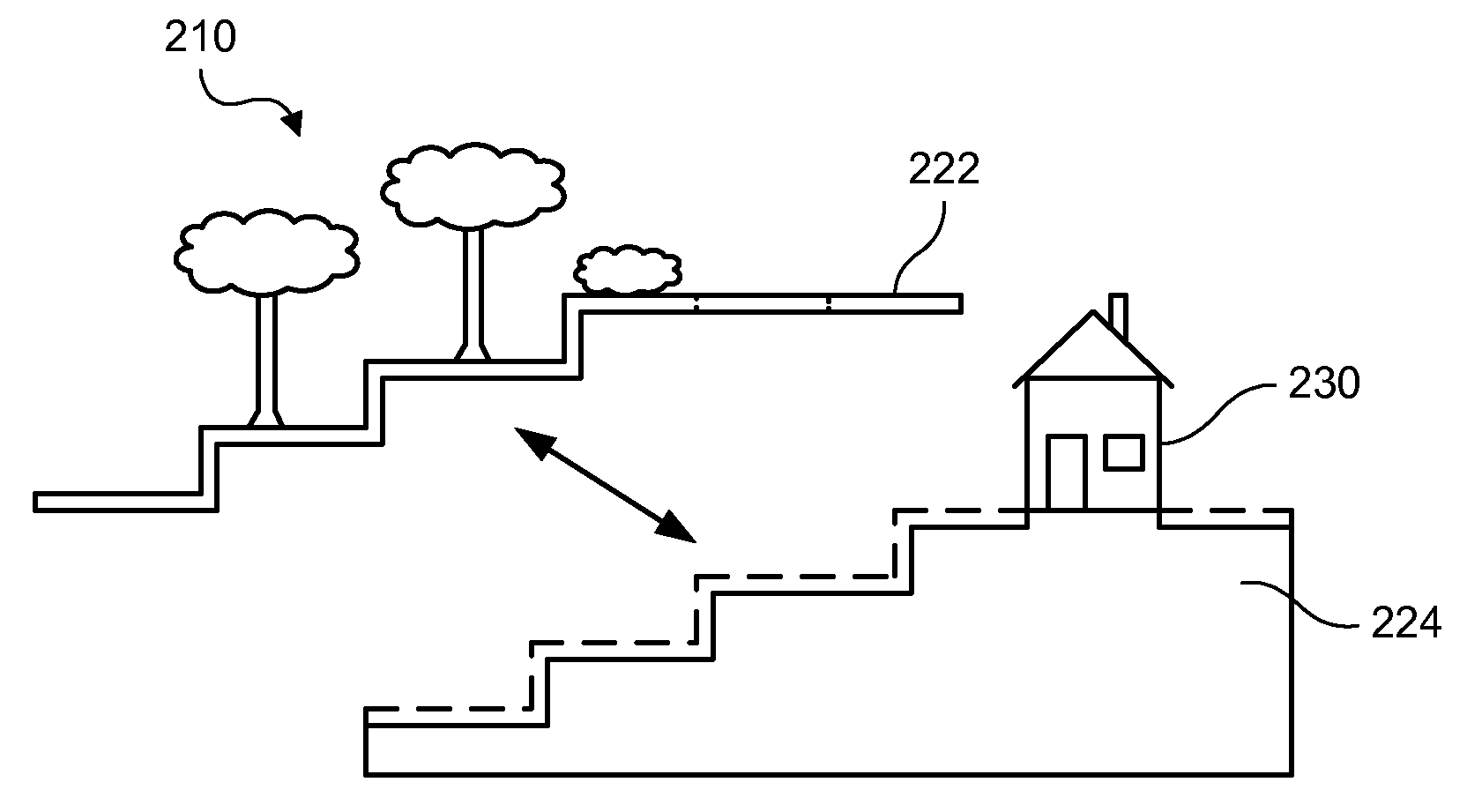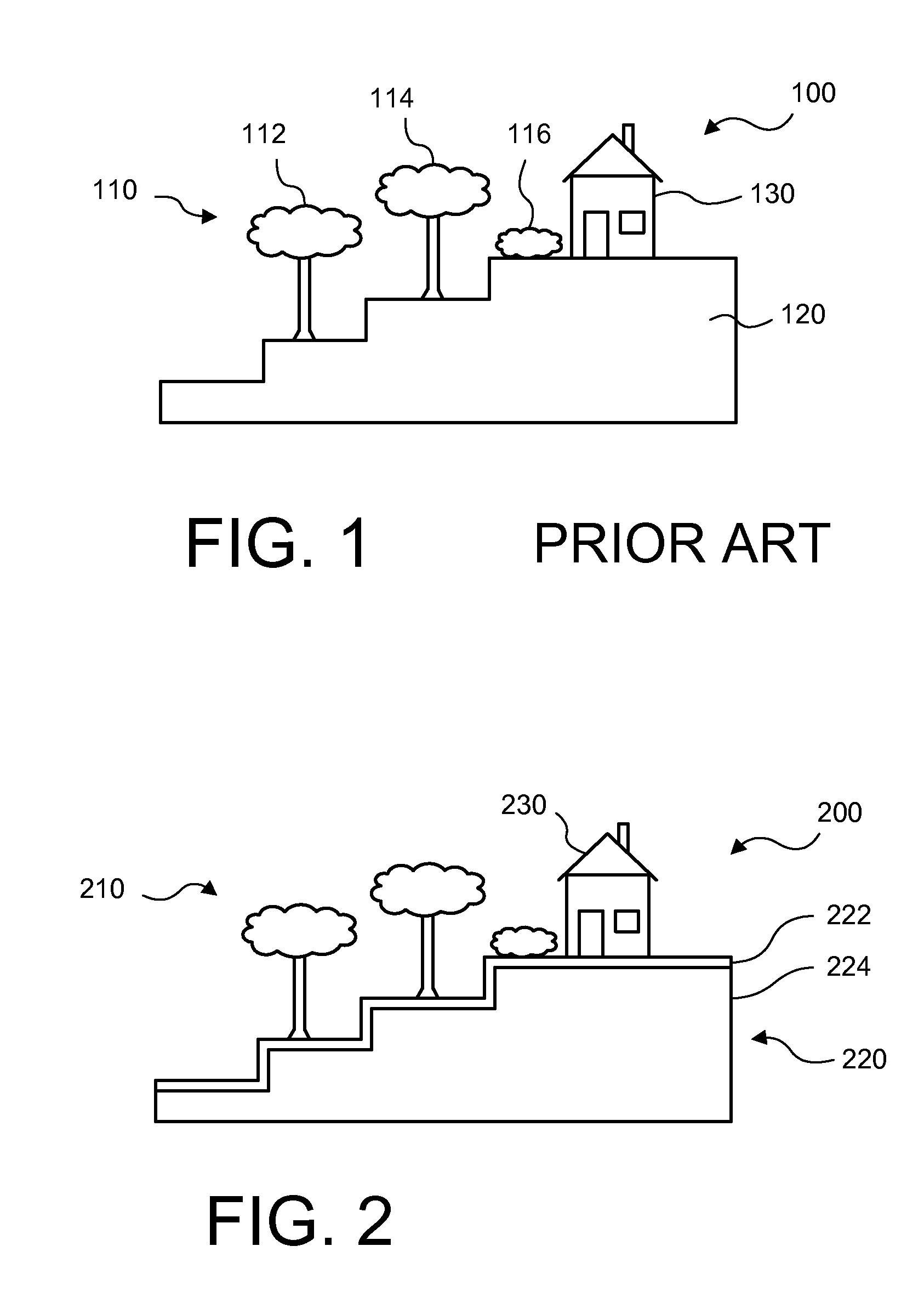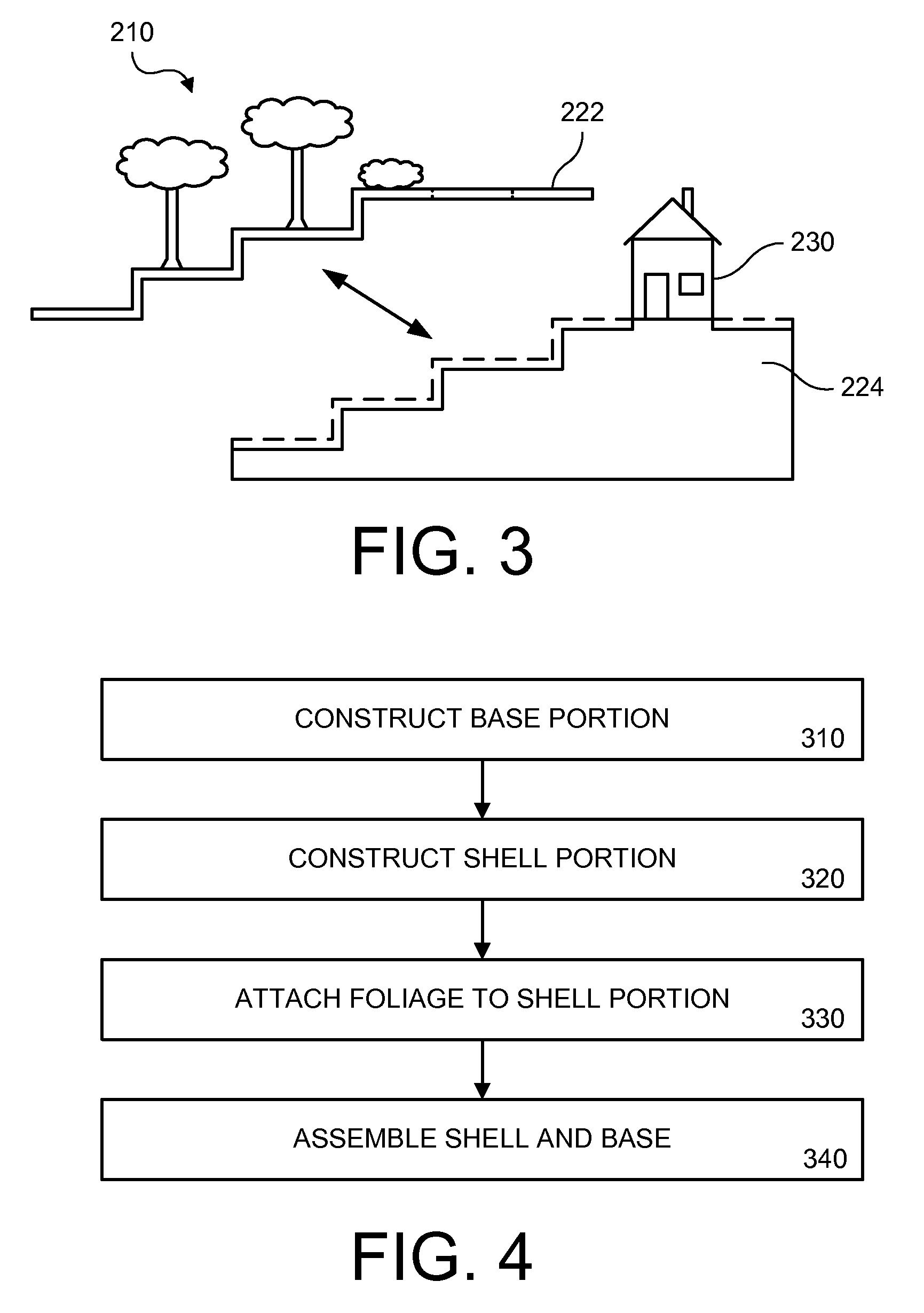Applying foliage and terrain features to architectural scaled physical models
a terrain feature and architectural scale technology, applied in the field of architectural scaled physical models, can solve the problems of difficult to evaluate the building model, no convenient method for easily evaluating the overall model iteratively, etc., and achieve the effect of facilitating repeated placement and removal
- Summary
- Abstract
- Description
- Claims
- Application Information
AI Technical Summary
Benefits of technology
Problems solved by technology
Method used
Image
Examples
Embodiment Construction
[0025]One embodiment of the present invention is a process by which model foliage can easily be detached and re-attached to a site model portion of an architectural model. This is in contrast to the traditional method of attaching foliage 110 to a site model portion 120 (refer to FIG. 1) of an architectural model 100, with miniature trees 112, 114 and shrubs 116 being attached to the site model 120 with glue, mechanical fasteners, or an interference fit provided by drilling a hole and jamming the miniature tree base into the hole.
[0026]A method according to the present invention avoids the difficulty of viewing and analysis of the building model 130 if the foliage 110 is permanently attached on the site model 120 and obscures the view of key elements of the building model 130 and cannot be easily moved out of the way. Removing and re-attaching the miniature trees 112, 114 and / or shrubs 116 that have been attached to the site model 120 via traditional methods can be extremely difficu...
PUM
 Login to View More
Login to View More Abstract
Description
Claims
Application Information
 Login to View More
Login to View More - R&D
- Intellectual Property
- Life Sciences
- Materials
- Tech Scout
- Unparalleled Data Quality
- Higher Quality Content
- 60% Fewer Hallucinations
Browse by: Latest US Patents, China's latest patents, Technical Efficacy Thesaurus, Application Domain, Technology Topic, Popular Technical Reports.
© 2025 PatSnap. All rights reserved.Legal|Privacy policy|Modern Slavery Act Transparency Statement|Sitemap|About US| Contact US: help@patsnap.com



